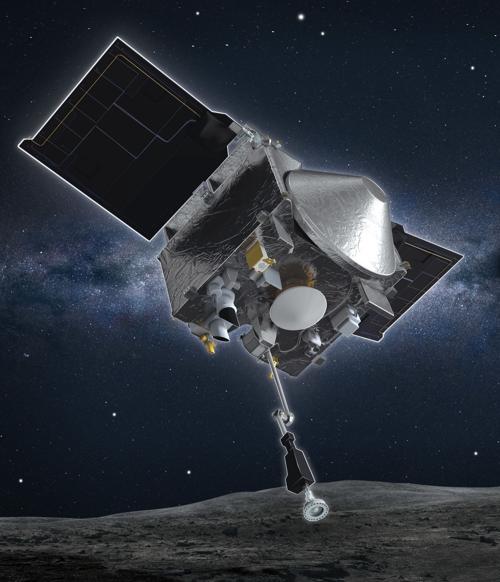Talk about working remotely.
The University of Arizona-led OSIRIS-REx team will conduct a final test run on Tuesday, Aug. 11, for its asteroid sampling mission this fall but will have to wait until Wednesday morning to find out whether the spacecraft worked as designed from almost 179 million miles away.
Tuesday’s second and final test will bring the unmanned craft to within 131 feet of the asteroid with a complicated series of preprogrammed navigational burns over four hours.
Throughout the practice run, only the spacecraft’s low-gain antenna will be pointed at Earth, transmitting data at a rate roughly 28 times slower than a typical cell phone text message, so the team will be able to monitor OSIRIS-REx’s vital signs but not much else. The images and science data from the test run won’t be downlinked using the spacecraft’s high-gain antenna until the operation is complete.
“Many important systems will be exercised during this rehearsal — from communications, spacecraft thrusters and, most importantly, the onboard Natural Feature Tracking guidance system and hazard detection,” said OSIRIS-REx principal investigator Dante Lauretta, a professor in the UA’s Lunar and Planetary Laboratory.
“Once we complete this milestone, we will move forward with confidence to the sample collection event that lies ahead.”
On Oct. 20, OSIRIS-REx is scheduled to fly in close enough to almost land on Bennu, collecting in the process up to 4.4 pounds of samples with a delicate, touch-and-go maneuver that will have the spacecraft’s sampling arm in contact with the surface for about five seconds.
If everything goes according to plan, the spacecraft will leave the asteroid in March 2021 and return to Earth with its precious cargo on Sept. 24, 2023.
Researchers are hoping the samples on board will provide clues about the origins of life and the early history of the solar system.
OSIRIS-REx has three major partners: the UA, Lockheed Martin and NASA’s Goddard Space Flight Center.
The spacecraft was launched in 2016 and entered orbit around Bennu at the end of 2018, after a two-year, 1.25-billion-mile journey to chase down the asteroid.
In December, the team officially unveiled the spot where it plans to collect its samples: a site called “Nightingale” located in a 230-foot crater in Bennu’s northern hemisphere.





